Horseback Riding the Northern Woods of Maine in Autumn
Fall is a favorite season of mine, and recently, I headed back to my origins in northern Maine to soak in the colorful foliage with my horse.
Text and photos by Susan St. Amand.
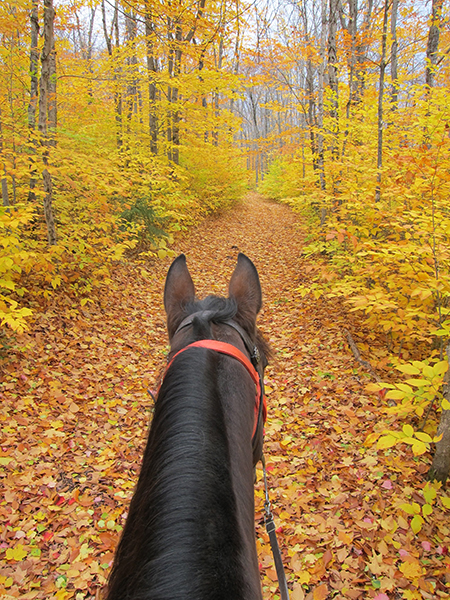
If you enjoy rustic outdoor adventures and getting back in touch with nature, then this is a place for you. In this region, you will withdraw from having everything at your fingertips and test your survival skills. Hunting, fishing, biking, boating, and many other outdoor activities are widely available due to the very rural nature of the area. Included are all-terrain vehicles and snowmobiling trails which abound in all local communities.
These trails are endless and weave an interconnecting web throughout the state. Thus, they make for interesting trails for horseback riding, as well. Horses should be well acclimated to handle meeting up with the occasional ATV'er or other vehicular traffic as some of these trails will cross roadways, with some actually going through small-town main street areas. With the cooperation from landowners, many trails cross over private property and respect should be given by staying on the trails.
Overnight stabling and horse camping facilities are rare in this area. Fortunately, I have lifelong connections in this area, so I was able to stable my horse with a longtime family friend for the duration of my visit. From my home base, I did not have to trailer out much to access a trail. Trails went out in many different directions so that I did not have to ride the same trail twice during my stay.
Be mindful of the hunting seasons and prepare accordingly. You do not want your horse to be mistaken for a moose. Wear bright orange clothing and stick to the main trails. Another idea is to purchase a bright orange halter for your horse and keep it on under your bridle.
Following are a taste of the sights and scenes I enjoyed while en route or trail riding:
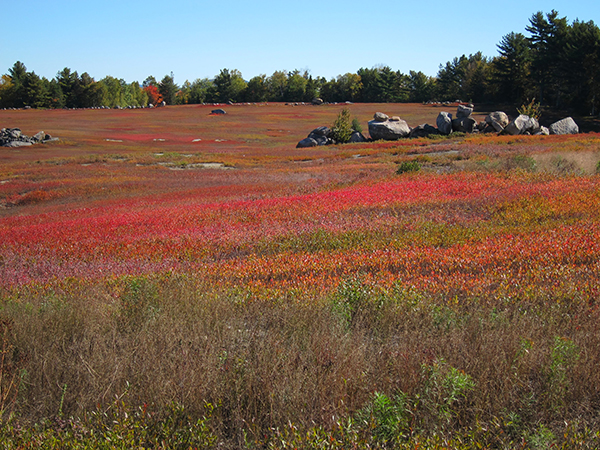
Wild blueberry fields turn a vibrant red in the fall. Wild Maine blueberries are harvested between mid-July to mid-September. As far as wild blueberry production, Maine is at the top of the list. These blueberries are smaller in comparison to the cultivated blueberries produced elsewhere and are canned or frozen for use as an ingredient in other blueberry products.
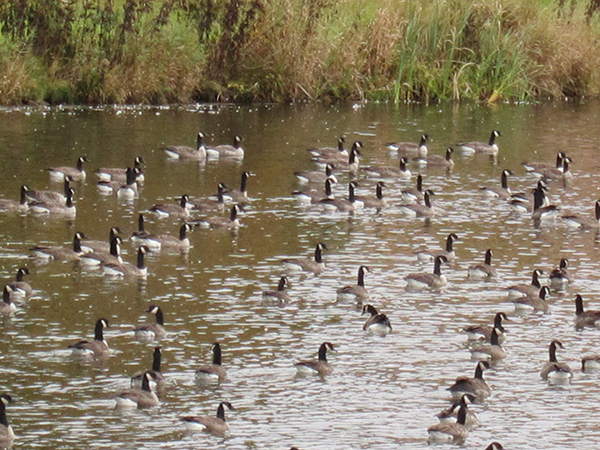
Canadian geese are seen congregating in large flocks feeding in preparation for their long journey migrating south for the winter. Their honking and large “V” formations flying above in the skies are also impressive.
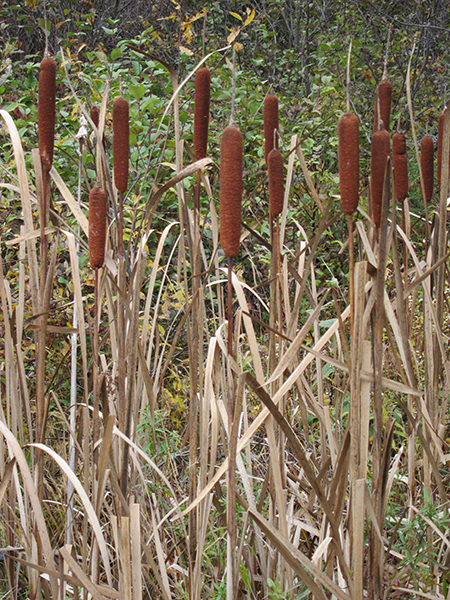
Fading cat-tail plants can be seen in many of the bogs or wetland areas.
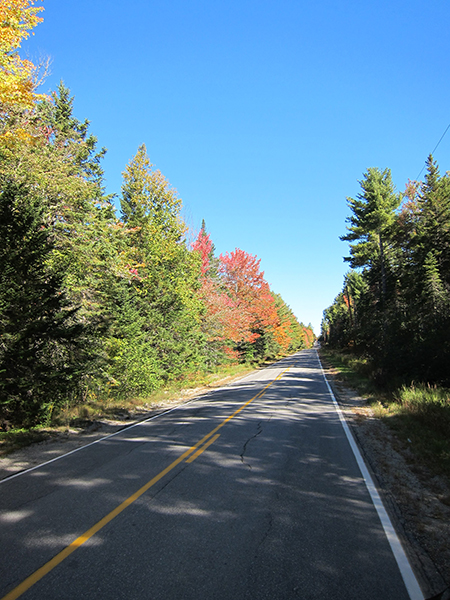
Endless trails give opportunities to enjoy the transitional season from summer to winter
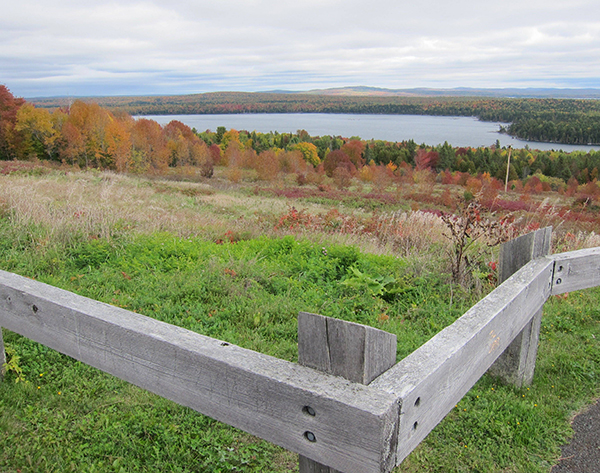
A stop to take in the “Million Dollar View” along Route 1A heading north is worth a look. Photos do not do it justice, as you can see for miles the lake nestled in the forested valley.
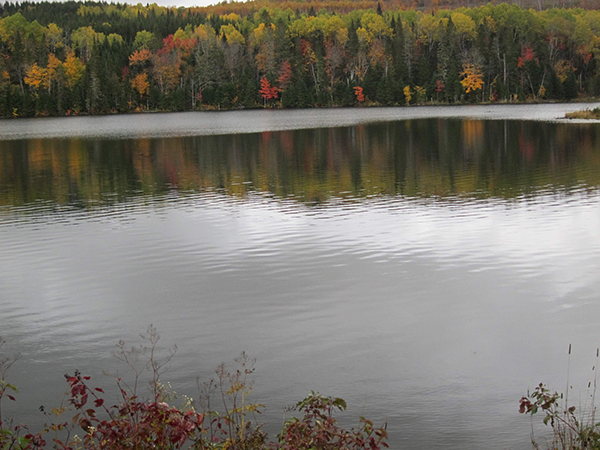
A view of Muddy Pond, one of many large ponds and lakes to be found in Maine.
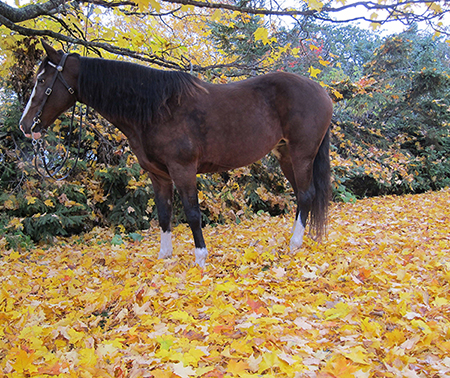
With all of the bright yellow maple leaves littering the ground, I had to take a photo of my horse amidst them.
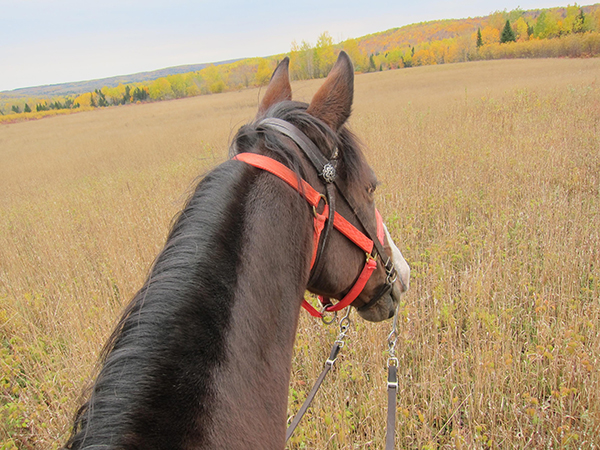
Overlooking a “sea of gold” hay field prior to crossing it in order to get to the trail by the tree line.
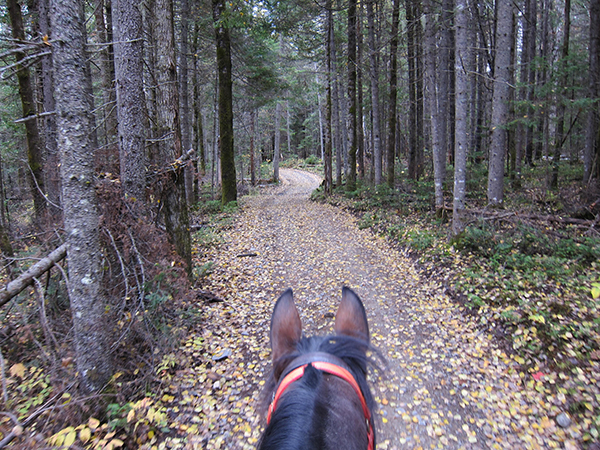
Another trail through the tall pines. Maine is known as the “Pine Tree” state due to its abundance of pine trees.
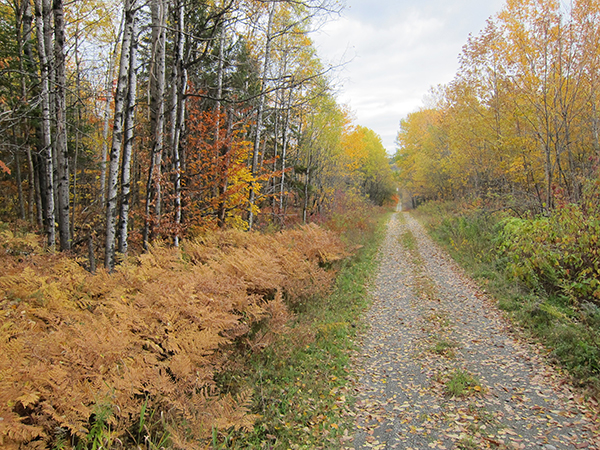
Yet again, another trail littered with yellow leaves both on the trees and on the ground. Reminiscent of following the “yellow brick road”.
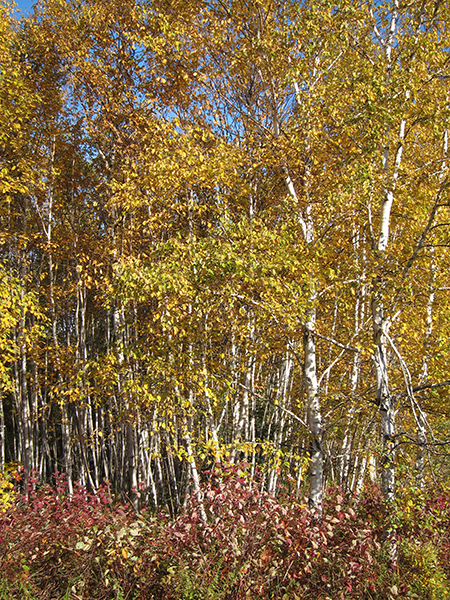
Another northern native tree is the white birch. White birch trees don't have bark, but a white papery covering that is shed from the tree as it grows. These white birch trees were popular with natives in earlier times for building canoes.
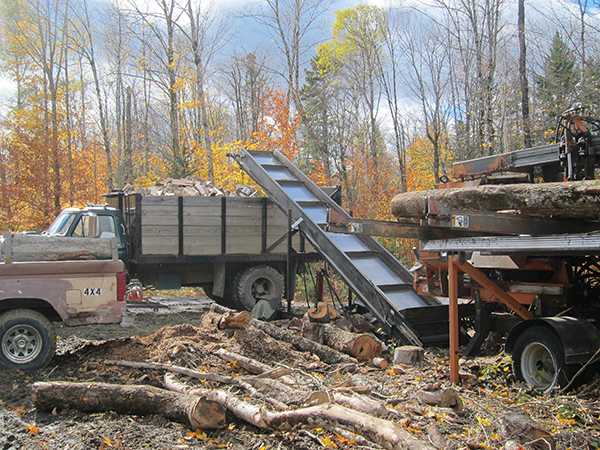
And lastly, in preparation for the long Northern winter ahead, wood cutting and splitting occurs with voraciousness during the fall season. With trees being a large natural resource in the area, most residents in this area have wood burning stoves to heat their homes during the long, cold winters. Again, machinery and technology over the years have progressed to make many labor-intensive chores much easier. No more chopping wood with an ax.
As the days got shorter, the air got colder, and barely a leaf remained on the trees. I loaded my horse one last time and followed the Canadian Geese's trail south, to my home in Virginia.
About the Author: Susan St. Amand is a Board Member of the Shenandoah Trail Riding and Horseman's Association in Shenandoah County, Virginia. She grew up in Northern Maine with horses on a farm and has been a transplant to Virginia for the past 26 years. A retired Youth Education Technician, she enjoys planning horse vacations with friends and has currently completed many rides in Maine, New Hampshire, Pennsylvania, New York, West Virginia, Tennessee, North Carolina, as well as Virginia, trailering her own horse.




